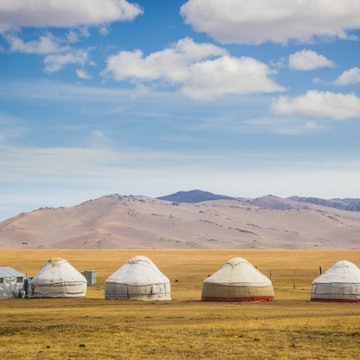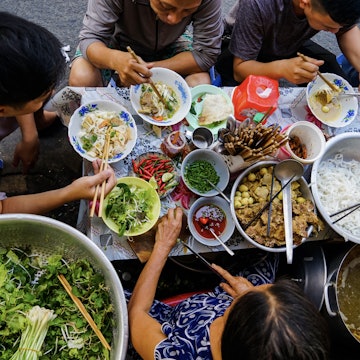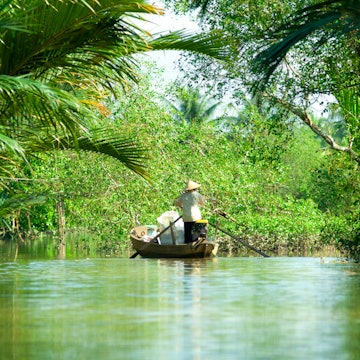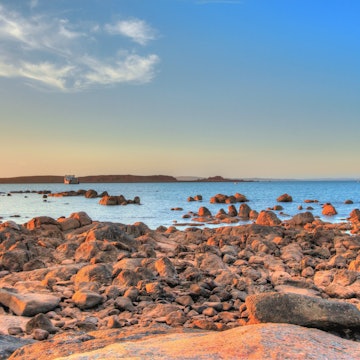
Changsha for families: visiting Hunan's cool capital with kids
Aug 3, 2017 • 6 min read

Changsha's busy streets offer a big-city vibe © thipjang / Shutterstock
Travelling families will have a ball in Changsha, capital city of China’s southern Hunan province, which delivers all the pleasures of a big city without the frustrations of one of the country's huge metropolises.
When Mao Zedong was a young resident of Changsha, he paused on Juzizhou, its famous river isle, and penned a poem commonly considered one of his greatest. In it he recalls visiting the city as a youth, and being 'full of enthusiasm'. Little did he know that future Changsha would embrace visitors from foreign lands and of all ages, including kids.
Though it might not figure prominently on some travellers' China itineraries, Changsha is a place for pressure-free time and good-value experiences, while still getting a dose of the big-city vibe thanks to its neon-clad streets and busy restaurants.

Changsha sees comparably fewer children from foreign lands, so the smiles and elated requests for selfies with the kids from locals (everyone should be prepared for this) make for a red-carpet experience. Changsha is also the hometown of China's most famous leader, Mao Zedong, and there are ample possibilities for history lessons that expand young people's world views. And of course, Changsha's child- and wallet-friendly attractions, comparatively short travel distances and amazing food only add to the fun.
Sunday in the park
Weekends in China are when families flock to urban green spaces for exercise, dance, play and chat. When non-Chinese families, especially those with little children, join the mix, the friendly, inquisitive and shutter-happy locals make it hard not to feel welcome. Lively and central Lieshi Park is one of the biggest leisure parks in China and features a memorial tower dedicated to the country's fallen heroes. There are also plenty of distractions for kids, like a climbing wall and bumper cars.

Even more famous is Tangerine Isle, a long, narrow river retreat said to be the largest inland islet in the world. Free to access and full of landscaped gardens through which kids happily romp, its five kilometres are best navigated by hiring bikes or hopping aboard an inexpensive tourist trolley.
New point of view
On the west bank of the Xiang River, Yuelu Mountain, rises 300 meters above sea level and 240 above the city. The park's multiple peaks and ridges extend for several kilometres, embracing places of both historic interest and great scenic beauty – lush groves of maple, catalpa, pine and chestnut trees are fed by year-round water springs. The path to the top takes adult legs less than an hour but can sometimes be steep for shorter strides. Instead, there is a chairlift up and kid-pleasing toboggan ride down.

Now with Mao
Chairman Mao was born in Shaoshan, a village 70km from Changsha, but spent plenty of time in Changsha during his younger years and supported it throughout his life. At the south end of Tangerine Isle looms an enormous (84m-high) free-to-see granite bust of Mao as a young man that will make kids gasp. Other installations – a rock-hewn poem he famously penned, statues commemorating his revolutionary actions – are also present but might make more sense to adults.
Families who wish to learn more about Mao can continue their discovery at Hunan First Normal University (1015 Fenglin Sanlu), where he studied and later taught, and the Changsha Municipal Museum, which is as much a shrine to Mao as a museum.
Brushes with history
Hunan's history, like China's is long. A must visit is the more than 1000-year-old Kaifu Temple, one of China's key, active Buddhist monasteries, where kids and parents alike can get a glimpse of the sublime and learn about the Buddhist tradition. Tianxin Pavilion Park, whose namesake pavilion and short stretch of old restored city walls, are some of Changsha's few surviving historical landmarks (and the walls are great for clambering kids).

A great deal of Changsha's earlier history is showcased in the Hunan Provincial Museum, the largest historical and artistic museum in the province. Among other things, it houses 3000 objects excavated from the 2000-year-old Mawangdui Tombs of a Han dynasty noble family unearthed in Changsha. The mausoleum, caskets and a mesmerising mummy will be all the kids talk about for days.
Other sights for kids
One particularly noteworthy, kid-friendly point of interest is Window of the World (485 Sanyi Dadao), the largest theme park in central China. Established in 1997, the park features more than 100 miniature models of international tourist attractions and historic sites, such as Mt Fuji, the Sydney Opera House and Mount Rushmore.

The Changsha Ferris Wheel (170 Furong Zhonglu, near Helong Stadium) is one of the five biggest in China at 120m high. Its 48 cabins can hold up to six people as it takes a 20-minute ride with astounding views over the city and Xiang River.
Chopsticks at the ready
Hunanese cooking is one of China's eight major regional cuisines and is most remarkable for being spicy, aromatic, colourful and seasonal. Family-style hotpot restaurants, where you cook meats, vegetables and fish in a bubbling pot of broth at the table, offer the chance to pick and choose ingredients for potential picky eaters or allergies. You can accommodate delicate palates by ordering yuanyang huoguo (鸳鸯火锅), a split pot with spicy and non-spicy broths. Other dishes worth trying are Changsha's signature spicy shrimp (kouwei xia; 口味虾) and Chairman Mao's red-braised pork (Mao shi hongshao rou; 毛氏紅燒肉) – landmark restaurant Huogongdian is family-ready with a snack menu in the courtyard and meal menu in the back room.

Another must-try is Changsha’s famed stinky tofu (chou dofu; 臭豆腐), which lives up to its name. Getting kids to taste a first bite is the challenge; after that there's no stopping them. It’s easy to find in areas with a strong street food presence – just follow your nose. Pozi Street, one of the oldest in Changsha, has numerous stalls to choose from. Wulipai Street, near Changsha Railway Station, is home to many restaurants that specialise in steamed dishes.
For more structured eating experiences and choosier eaters, the food courts in Changsha’s shopping centres have options from all over China and elsewhere in Asia and the West, including familiar fast foods.

Regular and sweet tea lovers should not shy away from the widespread and popular Sexy Tea shops, which despite the name, are as innocuous as the tea concoctions are delicious. Bubble tea shops, where kids can have the oddly fun experience of slurping down glutinous jelly balls with their milky tea, are common, too.
Make it happen
The Changsha metro makes getting around town very simple, especially with kids. Families with older kids and wallet-enabled WeChat accounts (only available on phones with local sim cards) can pick up short-term hire bikes parked all over the city.
Strong walkers will find the magnolia-lined boulevards and relatively compact centre a breeze to navigate. The central part of Changsha also has several neon-clad pedestrian zones where you can take in the sensory avalanche. Head for the quadrangle southwest of the Wuyi Square metro station: Huangxing Lu is Changsha's main commercial strip and Taiping Jie is an important shopping street that has preserved its original architecture.













